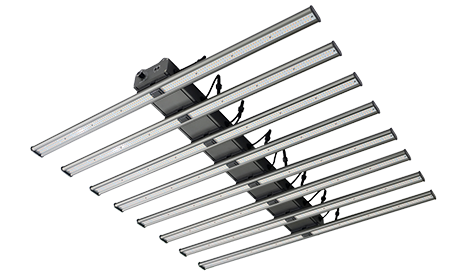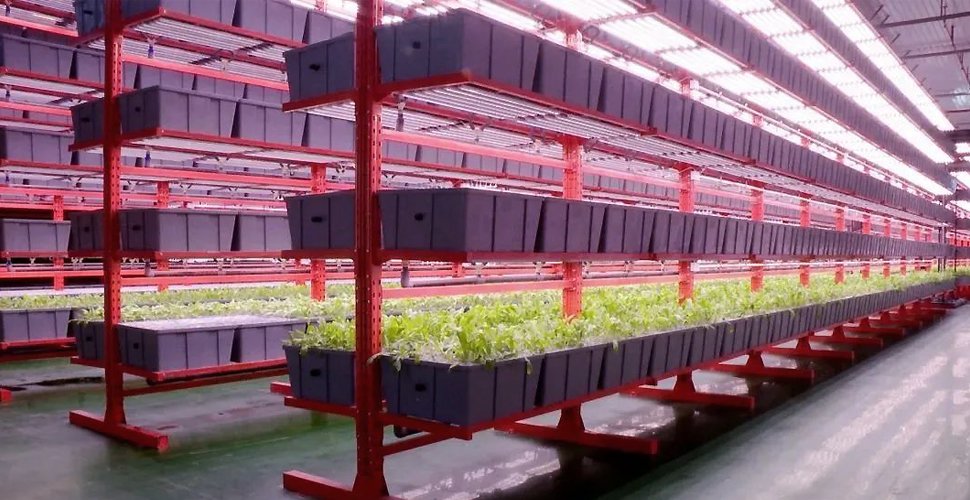LED grow lights have revolutionized the world of indoor gardening by surpassing traditional grow lights. With their small size, low power consumption, and long lifespan, they are the ideal choice for indoor gardening enthusiasts.
There are concerns among gardening enthusiasts about the potential harm of ultraviolet (UV) light emitted by LED grow lights. This type of light can damage plant cells and hinder growth.
Additionally, cannabis growers often inquire about the presence of UV light in LED plant lights. While some individuals are cautious about UV exposure, others require it for optimal plant growth.
Do LED grow lights emit harmful UVs that can negatively impact plant growth? Let’s unravel this mystery by examining the type of UV emitted by these lights and its effect on plants.
This article aims to explore and compare the UV parameters of various grow lights. We will analyze the source and attenuation of UV in LED grow lights and explain the UV requirements of different plants in detail.
By doing so, we hope to help you understand the effects of UV-A and other spectral ratios on plant growth.
Additionally, we will provide guidance on selecting high-quality LED grow lights that emit safe levels of UV. Our goal is to empower you to make informed decisions when choosing LED grow lights.
Do LED Grow Lights Emit UV Rays?
Yes, LED grow lights emit a small amount of UV, but mainly UV-A, which is not enough to harm plants.
Do you understand UV? Let’s briefly introduce what UV means.
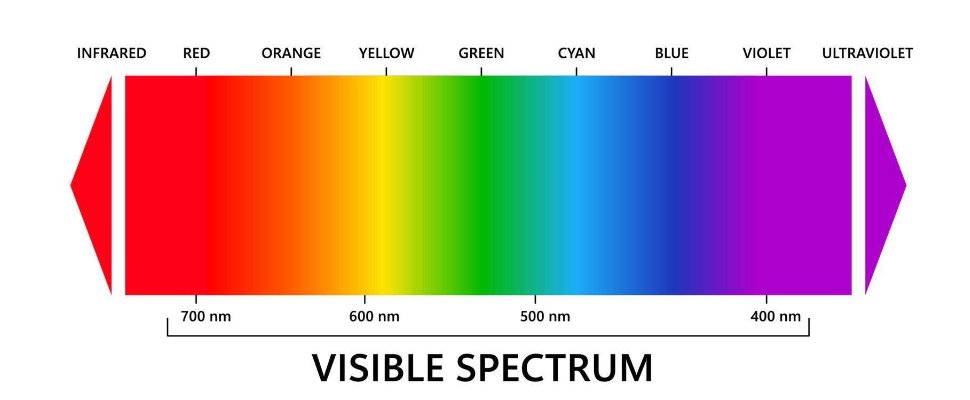
Ultraviolet (UV) radiation is electromagnetic radiation with wavelengths between 10 and 400 nanometers (nm), which is invisible to the human eye. Depending on the wavelength, UV is further divided into three types.
- UV-A: wavelength 315-400nm, almost harmless to humans and plants, can promote the synthesis of vitamin D in the human body and the growth of plants.
- UV-B: wavelength 280-315nm, can cause sunburn in humans and photodamage to plant leaves, but still beneficial to the human body’s synthesis of vitamin D and plant flowering when in the right amount.
- UV-C: wavelength 200-280nm, high energy, and has a strong bactericidal effect, damage to human and plant body cells, it is difficult to get from natural light sources.
LED grow lights emit a low level of UV radiation, particularly UV-A, as a result of the additives and phosphors used in their manufacture.
However, these levels are absolutely safe and can, in fact, assist in the growth of plants. Furthermore, the emission of UV-B from these lights is minimal and well below the safe limit.
LED grow lights for plants are manufactured professionally to ensure safe UV levels. This helps to ease any worries about UV radiation for users.
In comparison to high-pressure sodium lamps, LED grow lights have much lower UV output, with only 3-5% of the latter, according to tests.
UV Ratios Differ in LED Grow Light
The appropriate ratio of UV also affects the growth cycle of plants, which is a factor that growers need to consider when choosing LED grow lights.
- Some products increase UV-A by 5-15% to aid pollen development and secondary metabolism.
- Some products have a very low UV output and require additional UV supplementation.
- Some products offer optional UV fill light, mainly outputting 365nm UV-A.
Each LED grow light brand has different product parameters.
Let’s take a look at the UV ratios of LED plant lights from these plant light suppliers.
- Auxgrow FC06 series is designed with UV, enhanced blue and red light. UV and red and blue light can be adjusted independently. Adjustable spectrum grow lights are ideal for cannabis cultivation.
- Horticulture Lighting Group (HLG)’s grow light products provide 0-10% adjustable UV-A supplementary light devices, which can adjust the UV output according to the needs of different plant growth stages. This is an ideal design scheme.
- Luces de California’ SolarStorm grow lights provide 3% UV-A (380nm), the output is lower, mainly for safety considerations. The UV needs of some plants at certain growth stages may not be met.
- Black Dog LED’s PhytoMAX grow lights provide 3.4% UV. This design is mainly based on safety considerations, and the UV output is so little that it can be ignored. It is not conducive to the normal growth of some plants.
- The UV supplementary light of Mars Hydro’s grow light products ranges from only 0.5% to 3%, which may be difficult to meet the needs of most plants during normal growth cycles, not ideal.
From the above examples, we can see that different LED grow light brands and products vary greatly in UV output.
Some brands such as Auxgrow and HLG have a more advanced design concept, considering the actual UV needs of plants and making it adjustable. But other brands have either too low UV output or are not adjustable, which will affect plant growth.
Therefore, when choosing LED grow lights, considering UV output parameters and adjustability are essential. It will provide the most suitable growing environment for plants.
This also verifies the point made at the beginning of the article that the UV of LED grow lights does not necessarily insufficient or excessive for all products. The key is to choose carefully.
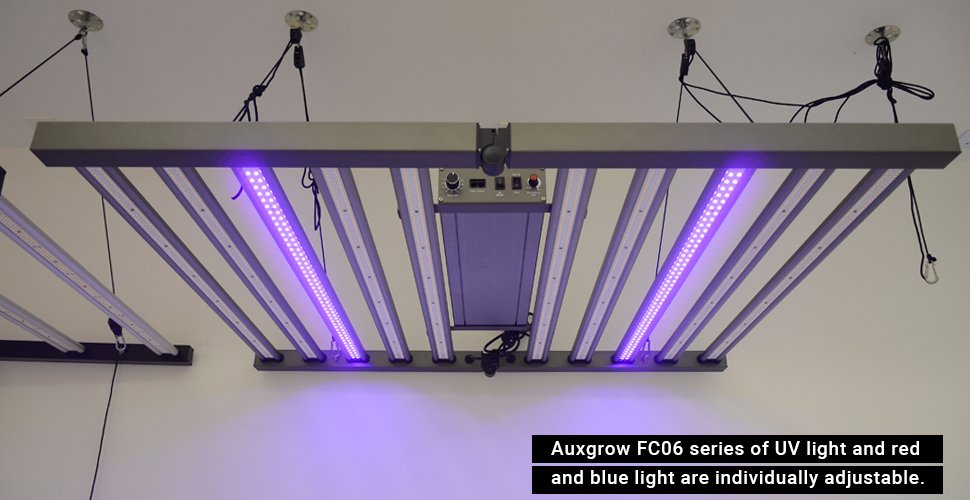
No Harmful UVA and UVB in Superior Quality Grow Light
Quality LED grow lights do not produce harmful amounts of UVB (280-315nm) and UVC (200-280nm), which is one of their important indicators.
Research tests show that high-quality LED grow lights emit a maximum of 1 W/m2 of UVB. The grow light model P900 from Platinum LED produces only 0.36 W/m2 of UVB at a distance of 20 inches from the plant, which is well below harmful levels. Additionally, the UVC output is minimal.
High-quality LED grow lights produce substantially less UVB radiation compared to other types of grow lights. For instance, GE Lucalox high-pressure sodium lamps emit 11.9 W/m2 of UVB radiation at the same distance, which is over 40 times greater than that of high-quality LED grow lights.
It has been observed that LED grow lights of good quality are able to prevent harm to plants by utilizing top-notch light-emitting diodes and phosphors and implementing a well-designed heat and optical system to minimize UVB and UVC emissions. In comparison to alternative grow lights, their UVB and UVC emissions are insignificant.
If you’re looking to buy LED grow lights, it’s important to select ones that have a UVB level below 1W/m2 and very little or no UVC output. This will help prevent any damage to your plants caused by excessive exposure to light.
You can find high-quality grow light brands like HLG, Auxgrow, and California Lightworks that offer products meeting these specifications, with UVB and UVC levels well below harmful limits.
LED grow lights with adjustable UV content are ideal for plants as it allows for customization according to their needs.
Using high-quality LED grow lights ensure safe and sustainable production with maximum efficiency.
UV Parameters of LED Grow Lights
For professional users, the UV parameters of LED grow lights are extremely important. They determine the effects on plant growth and photosynthesis. Here we can analyze the following aspects.
- Specific UV spectrum output. High-quality LED grow lights provide UV-A (315-400nm) and a small amount of UV-B (280-315nm) output, and UV-C (200-280nm) output is close to zero. This helps with the generation of vitamin D and normal plant growth.
- UV power density. Generally, the power density of UV-A requires 10-30mW/cm2 and UV-B requires 1-3mW/cm2. Too high can cause photodamage, too low to exert biological effects. Professional users will choose products with adjustable parameters.
- The ratio of red light to UV. A ratio between 3 and 10 is more suitable. Too much red light will inhibit the effect of UV, while too little will make the UV effect too strong. This needs to be adjusted according to the growth characteristics of the plant.
- The ratio of UV to other spectra. For example, the ratio of UV to blue light between 0.5 and 2 is better. Too much blue light will cancel out the UV and affect photosynthesis. This also needs to be adjusted according to the spectral needs of the plant.
- Whether UV output is adjustable. This is one of the key factors for professional users. Adjustable UV output can maximize the biological effects of UV at different growth stages. Fixed output products have relatively single functions and the actual effects are difficult to achieve optimal.
- The coordination of UV and thermal management. UV will increase the temperature of the light source, which requires LED grow lights to have a good heat dissipation design, otherwise high temperatures will accelerate the decay of UV and affect its biological effects. This is also an important reference standard for professional users to choose products.
- The decay rate of UV and other bands. High-quality LED products have a decay rate of UV and other major bands (such as blue and red light) within the same range. This can ensure the ratio and power density consistency between each band, and maximize the biological effect of UV. This is also one of the signs to judge the quality of products.
In summary, for professional users purchasing LED grow lights, UV parameters are paramount.
The ideal products should have adjustable UV and spectral output, scientific ratio of each band, excellent thermal management design, and consistent decay rate of each band.
This can ensure the best UV effect under different growth conditions and achieve high-quality and efficient plant production.
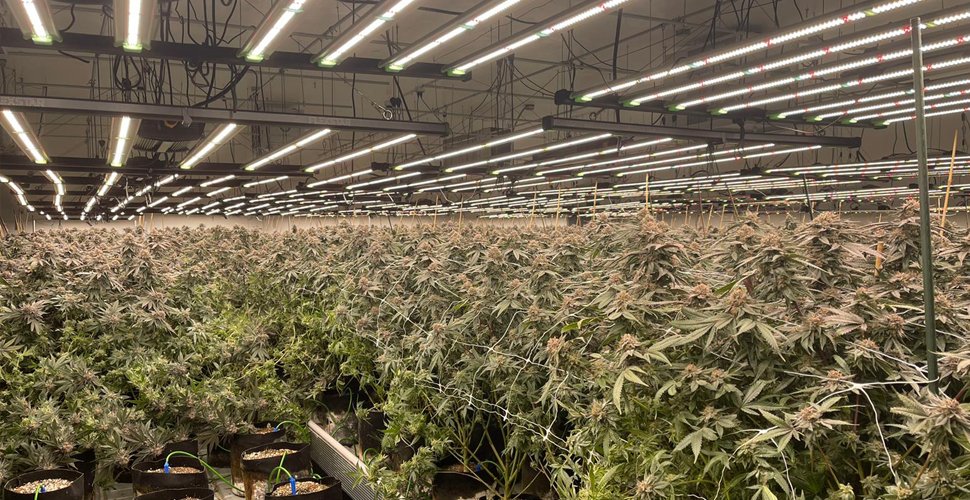
Do Plant Lights Have to Be UV?
LED grow lights are equipped with appropriate UV output mainly to meet the growing needs of various plants and produce a complete and natural light environment.
- To meet the growing needs of light-sensitive plants such as cannabis.
Light-sensitive plants such as cannabis need strong light during growth, especially UV-B and blue light.
Appropriate UV-B can promote dwarfing of cannabis and increase alkaloid content, which are key factors affecting the quality and yield of cannabis.
At the same time, UV-B also helps the normal growth of other light-sensitive plants such as tomatoes and carrots.
- To simulate a natural light environment and enhance the authenticity of LED grow lights.
In addition to cannabis, general plants also receive adequate UV radiation under natural light conditions, which helps with the generation of vitamin D and the regulation of other physiological functions.
The equipped with appropriate UV-A and UV-B output can make LED grow lights produce a more natural and comfortable light environment, which is beneficial to the normal growth of most plants.
Of course, UV output needs to be strictly controlled at a safe level. Excessive UVB and UVC can cause photodamage and mutations, which can damage plant growth.
The UV output level must be strictly controlled, and the ratio with other spectra reaches the optimum. This is the key to ensuring that UV exerts biological effects without harming plants.
It is also an important feature and advantage of high-quality LED grow lights currently. However, the control of the UV ratio and output level also needs to consider the specific characteristics and growth needs of the plants.
This requires the customer or the plant light agent to communicate fully with the manufacturer when purchasing and choosing the most appropriate product solution.
How Much UV Light Do Plants Need?
Let’s take a simple example of the amount of UV required for cannabis, tomatoes, carrots, and leafy vegetables.
- Canabis
This is a light-sensitive plant whose reproductive process requires higher levels of UV, especially UV-B.
At the early stage of growth of cannabis, UV-B is recommended to be around 5-10W/m2, with UV to IR ratio between 3-5.
Later in growth UV-B can be reduced to 3-7W/m2 with an IR ratio between 1-3. Moderate UV-B helps dwarf cannabis and increases alkaloid accumulation.
- Tomatoes and carrots
These two plants are also light-sensitive species, and their UV-B requirements are slightly lower than those of cannabis.
Generally, UV-B at 3-7W/m2 and IR ratio control between 2-4 is more appropriate. The right amount of UV-B can promote photosynthesis and growth.
- Leafy vegetables
Leafy vegetables have low UV requirements. Too high UV-B can easily cause photodamage. In general, UV-B does not exceed 5W/m2, and the ratio to IR is controlled between 0.5-1.5.
Leafy vegetables are more suitable for general full-spectrum LED grow lights or natural outdoor light for growing.
Are there friends who are confused, here the marijuana UV-B is recommended at about 5-10W/m2, while the UV-B standard of high-quality LED lights mentioned earlier is at 1W/m2.
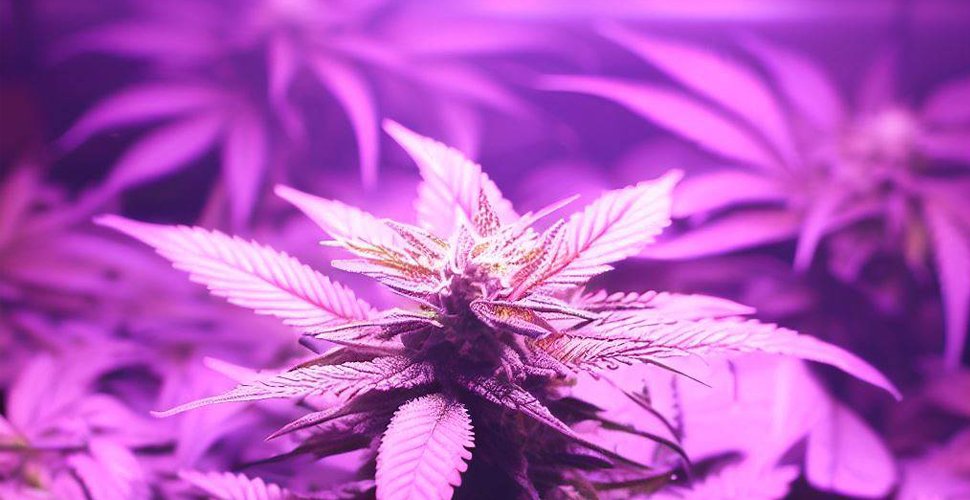
The UV-B output level of 1W/m2 mentioned is mainly considered a safer level for general plants.
As a light-sensitive plant, cannabis has a higher tolerance for UV-B, so the UV-B requirement during growth will also increase accordingly. This is the result of considering the optimal parameters for different plant types.
Although 1W/m2 of UV-B output is safer for general plants, this low level is difficult to meet the growing needs of light-sensitive plants such as cannabis. When considering the growth characteristics of cannabis, the UV-B output range of 5-10W/m2 is more reasonable and appropriate.
In this contradiction, the 1W/m2 and 5-10W/m2 UV-B output mentioned refers to the optimal reference range under different plants and growth stages.
1W/m2 can avoid photodamage for general plants, while 5-10W/m2 in the short-term during cannabis growth helps growth.
However, irradiation above 10W/m2 for a long time is still not recommended. Comprehensive judgment is required during use.
This also requires users to choose the best product configuration scheme and parameter range according to the plant type when purchasing.
Hopefully, through this explanation and supplement, this contradiction can be clarified and a more comprehensive and accurate understanding can be provided.
Conclusión
It’s important to note that LED plant lights do emit UV, but this is done in a safe and controlled manner.
The reason for this is that moderate levels of UV light can help LED grow lights provide the necessary amount of fertility for various types of plants, resulting in a more natural and comprehensive light environment.
To determine the quality of an LED grow light, it is important to look at factors such as its UV and spectral output, product performance stability, customer service professionalism, and customization options.
Proper scientific settings for performance parameters are crucial for achieving optimal growing conditions and results.
jayes
Como gerente de marketing digital en AUXGROW, Jayes combina la pasión por los sistemas hidropónicos y la experiencia en luces de cultivo LED. Con experiencia práctica y un profundo conocimiento, Jayes le guía a través del mundo del cultivo sostenible.


